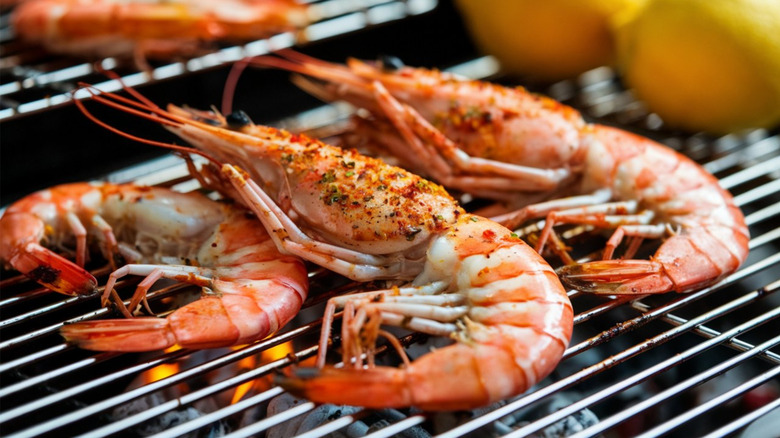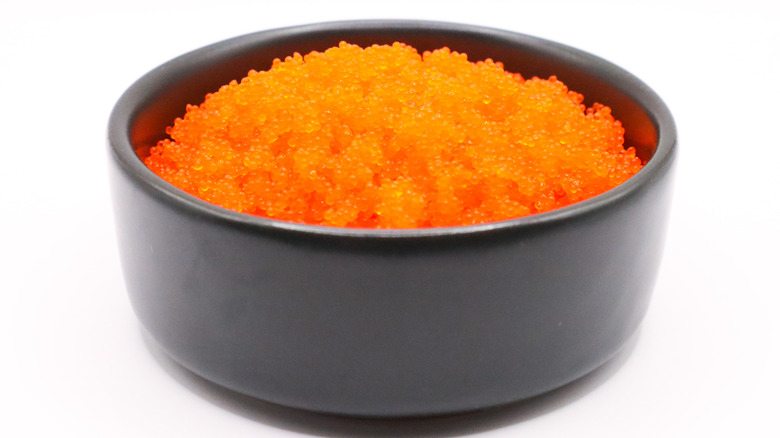Don't Be Fooled – There Really Is A Difference Between Shrimp And Prawns
In the United States, we slap the "shrimp" label on everything that even bears a passing resemblance to that crustacean — even prawns. In Australia, they do the same thing with prawns — even shrimp. You may or may not recall a 1980s-era campaign from the Australian Tourism Commission which etched "throw another shrimp on the barbie" into the American lexicon, despite the fact though Australians would never use that term Maybe it was a subconscious way to spot tourists Down Under.
The name confusion is part of why shrimp and prawns get lumped together so often. It only gets more confusing when you hear that an Asian tiger shrimp is also known as a giant tiger prawn. That shrimp is technically a prawn. As synonymous as their names have become and as similar as shrimp and prawns look and taste, they are not the same species.
Shrimp have claws on two pairs of legs and a curved body. Prawns have a straighter body with overlapping segments, with claws on three pairs of legs, and branching gills. They also tend to live in different environments — shrimp are more commonly found in saltwater, prawns in freshwater. But just to keep things confusing, there are also freshwater shrimp and prawn species that live in saltwater.
Unless you are counting the claws on your crustaceans, you'd likely never know the difference. That's why the names are blurred on menus and in seafood markets around the world, but if you're trying to grill the juiciest shrimp on the ol' barbie, here are the distinctions.
Why they're treated the same
Typically, there's a difference between saltwater and freshwater seafood in taste and texture. But yet again, shrimp and prawns keep it tricky. Despite one being saltwater and the other freshwater, it's still nearly impossible to tell them apart by taste alone. You'd need a sommelier's palate to discern the subtle differences.
Prawns are typically larger and sometimes described as a little sweeter or firmer in texture, but that really depends on their diet. And if you're using a dry brine technique to keep shrimp firm and tender, telling them apart by taste alone is nearly impossible. Nutritionally, they're nearly identical too. Both are great sources of lean protein, omega-3s, and nutrients like calcium, zinc, iron, and B12.
So what's the big difference? There isn't one — just a lot of subtle ones, which seems strange for two entirely separate species. One distinction is that shrimp carry their eggs along their bodies — that's why you sometimes see an orange paste on raw shrimp. Prawns release their eggs into the water, so you'll never see prawn roe for sale, and if you do, you'll know not to buy it. In the end, the biggest difference between shrimp and prawns might just be what country is doing the naming.

